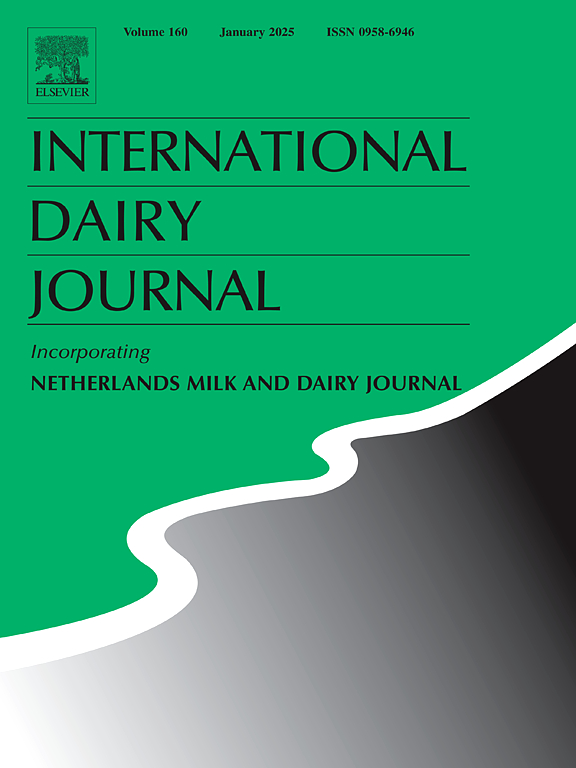Development of pasta filata style-cheese from dried curd: A process innovation
IF 3.1
3区 农林科学
Q2 FOOD SCIENCE & TECHNOLOGY
引用次数: 0
Abstract
By making a storable cheese curd, cheese can be produced on demand, and product waste is reduced. Freezing is one possibility for producing storable cheese curd; however, storage in a frozen state is associated with costs. Dried cheese curd could be a viable alternative. Techno-functional properties must be regained when the cheese is produced. This study investigates whether producing pasta filata-style cheese from dried curd is possible. Therefore, two approaches were pursued: i) dried cheese curd was rehydrated and thermomechanically treated without further addition of water (DR) ii) dried cheese curd was thermomechanically treated with hot stretching water without prior rehydration (DHW). A non-dried sample was used as a reference (Ref). It was found that rehydration of 60 min is necessary to absorb the water to produce a pasta filata-style cheese with acceptable/set dry matter. Rehydration time is therefore acceptable on a technical and small scale. Without rehydration (DHW), the dry matter content is high, and cheese yield is low. In addition, there are some losses in fat content due to the drying process, where fat melts and partly exits the cheese curd. Confocal laser scanning microscopy (CLSM) images show that fat globules become larger and agglomerate. The storage modulus at 20 °C (G′20 C) is highest for DHW, followed by Ref and then DR. Longer treatment times tend to decrease G′20 °C for DHW. Plasticization is obtained in all cases with a tan δmax of approximately 1.2–1.4.
求助全文
约1分钟内获得全文
求助全文
来源期刊

International Dairy Journal
工程技术-食品科技
CiteScore
6.50
自引率
9.70%
发文量
200
审稿时长
49 days
期刊介绍:
The International Dairy Journal publishes significant advancements in dairy science and technology in the form of research articles and critical reviews that are of relevance to the broader international dairy community. Within this scope, research on the science and technology of milk and dairy products and the nutritional and health aspects of dairy foods are included; the journal pays particular attention to applied research and its interface with the dairy industry.
The journal''s coverage includes the following, where directly applicable to dairy science and technology:
• Chemistry and physico-chemical properties of milk constituents
• Microbiology, food safety, enzymology, biotechnology
• Processing and engineering
• Emulsion science, food structure, and texture
• Raw material quality and effect on relevant products
• Flavour and off-flavour development
• Technological functionality and applications of dairy ingredients
• Sensory and consumer sciences
• Nutrition and substantiation of human health implications of milk components or dairy products
International Dairy Journal does not publish papers related to milk production, animal health and other aspects of on-farm milk production unless there is a clear relationship to dairy technology, human health or final product quality.
 求助内容:
求助内容: 应助结果提醒方式:
应助结果提醒方式:


